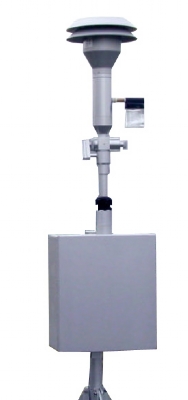
PM 10および PM 2.5粒子に関する限り、空気の質を測定する最も一般的な方法は、いわゆるベータ減衰モニター(別名 BAM) を使用することです (右の図を参照)。これらは専門的な機器であり、中国、米国、および世界のほとんどの国で大気質モニタリングに使用されている唯一の公式機器でもあります。最も有名なメーカーは、 Met-Oneと呼ばれる米国に拠点を置く会社です。
BAM の動作原理は非常に単純です。粒子状物質 (PM) の薄い層を通過するベータ粒子 (電子) の数の減少を測定します。 PM 層の厚さが増加すると、通過できるベータ粒子の数が少なくなります。

この種の BAM 装置の唯一の問題は、コストが 120,000 CNY (15,000 ユーロ) と見積もられていることです。中国に限ると、その数は約 500 (各都市につき約 10 観測点) ですが、それでも PM 2.5測定値のない都市がまだ多くあるため、これでは十分ではありません。タイには 21 の自動(つまり、毎時測定機能付き)ステーションがありますが、PM 2.5データを提供するものはありません。そしてベトナムには全国で3駅しかありません。
それでは、世界中の政府が真新しいベータ減衰モニターに投資するのを待っている間に、何かできることはないでしょうか?答えは「はい」です!実際、PM 10および PM 2.5ベースの大気質の測定に使用できる比較的手頃な価格の機器があります。最も有名なものは Dylos Air Particule カウンターです。
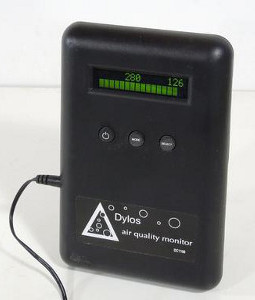
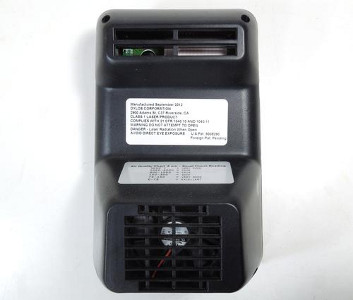
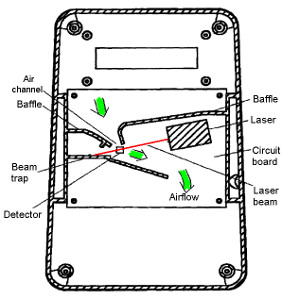
Dylos 大気粒子カウンターがどのように機能するかを知りたい場合は、 woodgears.ca の Matthias による優れたリバース エンジニアリング作業を参照するか、Dylos の Web サイト ( www.dylosproducts.com/ ) から参照してください。測定の背後にある理論を理解するには、研究論文「光学散乱に基づく環境微粒子分析のための低コスト機器」を参照することもできます。
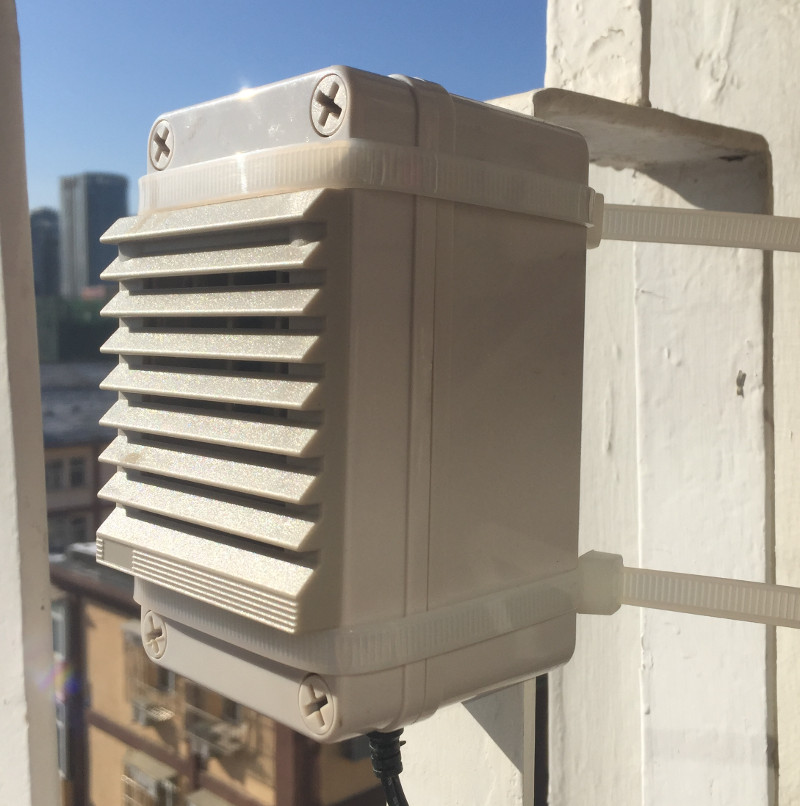
注: この記事は 2013 年に書かれたものです。Dylos モニターは今でも優れた製品ですが、現在はより優れた手頃な価格のモニター製品があるため、Dylos 製品の購入はもうお勧めしません。
たとえば、ES Labs のGAIA 大気質監視ステーションの製品範囲をチェックできます。
--
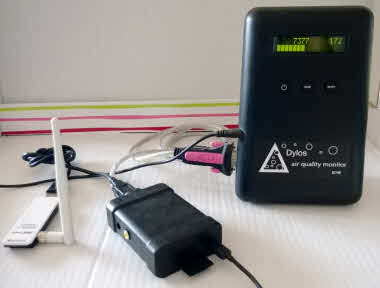
このような Dylos 機器が大気質を測定するための一時的なソリューションとして使用できることを証明するために、 PC インターフェイスを備えた Dylos DC 1100 Proをベースとした小規模な実験を研究室でセットアップしました。 Dylos PC 1000 pro は比較的安価で、Amazon から 319 ドルで購入できます。
PC インターフェイス バージョンの Pro を入手する必要があることに注意してください。 Pro 以外のバージョンでは PM10 以上の粒子しか検出できないため、Proでは PM 2.5までの小さな粒子を測定できる必要があります。 PC インターフェイスバージョンは、dylos モニターから PC にデータを自動的に抽出するために必要なシリアル インターフェイスを提供するため必須です。
中国の淘宝網または京東 (jd.com) から機器を購入する場合は、注意して正しいバージョンを注文してください。 PC インターフェイスのないDC 1100 の最も一般的なバージョン。タオバオではこの正しいバージョンを提供しているショップはほとんどなく、この記事の執筆時点では jd.com も正しいバージョンを提供していません。中国からの機器の購入についてサポートが必要な場合は、「Dylos 機器の注文」という件名でご連絡ください。注文のお手伝いをいたします。
--
データを自動的に抽出してサーバーに送信するには、Raspberry PI ($56) とシリアル - USB ケーブル ($9) が使用され、合計 BOM は $375 になります。 (下の画像をクリックすると、この素材をすべて Amazon から購入できます)
 |  |  |
| Dylos DC1100 pro with PC interface | Serial to USB cable | Raspberry PI |
Dylos 粒子カウンターを Raspberry PI に接続し、dylos データを World Air Quality Index プロジェクト サーバーに自動的にアップロードするためのドキュメントとスクリプトは、github: github.comから無料で入手できます。ご質問がございましたら、件名を「Dylos Experiment」としてご連絡ください。
また、Dylos パーティクルカウンターを屋外に設置する場合は、設置場所に注意する必要があることにご注意ください。風は測定値に大きな影響を与える可能性があるため、理想的には風が強すぎない場所に置く必要があります (その理由は、Dylos カウンターは空気の流入と空気流入の量を得るために単純なファンを使用しているためです)正確な測定値を得るには、1 分あたりの速度が一定である必要があります。このシンプルなファンが、この種の材料がプロ仕様の MetOne BAM センサーと比較して非常に手頃な価格である理由の 1 つです)。
--
Dylos の測定値と BAM の測定値を比較するために、私たちのステーションは三里屯ソーホー地区に位置しているため、北京朝陽農業展覧館 (朝阳农展馆) から提供された BAM データを使用します。
そして、これがリアルタイムの結果です。青の線は dylos 読み取り値 (1 分ごとに更新)、赤の線は BAM データ (1 時間ごとに更新) です。最初のグラフは PM 10の測定値を比較し、2 番目のグラフは PM 2.5を比較します。また、BAM データは直接 µg で提供される、つまり AQI グレードに変換されないことに注意してください。

(Click on the picture to open the real time version)
ご覧のとおり、dylos と BAM 読み取り値の類似性は非常に高いですが、必ずしも完全に比較できるわけではありません。この投稿の後半 (十分なデータが収集できたら 2 か月後に書きます) では、測定値に関する統計データをさらに提供します。
また、独自の Dylos ステーションをセットアップしてこの実験に参加することに興味がある場合は、お問い合わせください。すべてのスクリプトと詳細なセットアップを提供し、リアルタイムで測定値を確認できるようにセンサー データベースを追加します。
--
この投稿のフォローアップとして、 Dylos Air Particle Conter 実験メンテナンスに関する新しい投稿を確認できます。
